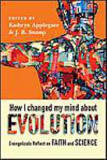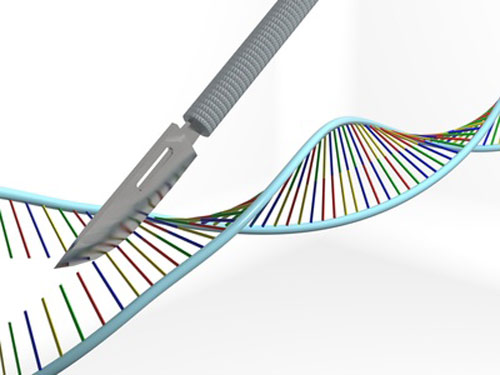
Disasters sometimes have a bright side. Given all of the recent news about hurricanes, earthquakes, and forest fires, a little bit of good news would certainly be welcome.
Out of all of this destruction, what could possibly be good news? Actually, it has to with unmanned aerial vehicles (UAV's), aka "drones". The good news is they're helping with hurricane and earthquake relief. The better news is that they're pointing to something else: an even bigger and more important rescue.
Drones seem to be showing up in all kinds of places. Hobbyists are the biggest buyers of drones, as approximately 94% of drone sales are in the hobby market. This is largely due to the tremendous reduction in the price of drones. You, yourself, may have given or received a drone as a present last Christmas. The whirring sound of hobbyist drones is increasingly common in parks and neighborhoods around the country.
All of these drones have created a range of different problems. Many, including the Federal Aviation Administration, are concerned by the proliferation, and there's a race to get up to date regulations in place. There's also been a battle over whether states and localities can set different, stricter rules regulating drones.
While hobbyist drones are proliferating, so are commercial and industrial drones, just on a different scale. Only about 6% of drone sales are commercial and industrial, yet that 6% actually represents 60% of the dollar value of drone sales. That's because the commercial and industrial UAV's are far more sophisticated, and far more expensive, than their hobbyist cousins found in the typical family garage.
Usage of commercial drones has definitely been growing, but the recent spate of hurricanes, earthquakes, and fires has revealed a potential huge area for these drones – disaster relief. Just since Irma, the FAA has issued 132 authorizations to use drones in hurricane relief in Florida alone. Let's consider how they've been used in the wake of Hurricanes Harvey, Irma and Maria, as well as recent earthquakes and fires.
After Hurricane Irma, the Air National Guard started using drones to conduct aerial surveys, deciding where relief is needed most. Historically, the task of surveying damage has been painstakingly slow, done on a block by block basis. Drones can have a hugely positive impact on this. The Federal Aviation Administration has been quite wary of drones because of air safety concerns. Yet FAA spokespersons have recently remarked that drones are playing "an invaluable role" in Hurricane Irma relief. FAA Administrator Michael Huerta recently said, "I don't think it's an exaggeration to say that the hurricane response will be looked back upon as a landmark in the evolution of drone usage in this country."
In the wake of Irma, the US government's Customs and Border Patrol agency has used drones to map Key West, Miami, and Jacksonville, each significantly affected by the storm. This mapping process is obviously much faster than the traditional method.
The Red Cross has been using drones to facilitate relief efforts in the wake of Hurricane Harvey in Texas.
Besides relief agencies, insurance companies are also beginning to use drones. For example, Airbus Aerial, a division of European jet maker Airbus, has a division that is deploying drones on behalf of insurance companies.
A Canadian company called The Sky Guys has been using some its drones to help with mapping after Hurricane Harvey. Sky Guys typically deploys drones to do infrastructure construction work, so putting some of their drones to work in the Harvey cleanup is a bit of a departure, but one that seems to be working well.
Another application of drones is to provide emergency mobile phone and Internet service. Many victims of Hurricanes Harvey, Irma and Maria have contended with knocked out telecommunications. These days, that's one of the biggest problems. One of the solutions is to launch drones with 4G LTE service. Drones are launched and "tethered in place". It's a bit unorthodox, but who cares if your mobile and Internet service are out and a drone restores it?
How rapidly is the market for drones growing? Based upon research by Goldman Sachs, Gartner, and PriceWaterhouseCoopers, very rapidly indeed, and not just for hobbyists! Gartner says the market grew 60% just from last year to this year. Goldman Sachs recently issued a report saying that by 2020, the market will be $ 100 billion. The consumer market will grow to $ 17 billion, but that's dwarfed by the military market ($ 70 billion) and what Goldman calls the "Commercial/Civil" market ($ 13 billion). PwC goes farther, estimating the worldwide market in 2020 will be $ 127 billion. These are, of course, merely estimates, but they strongly suggest a very fast growing market. Given the recent application of drone technology to disaster relief, the estimates may even be understated.
Besides the interesting fact of these new, innovative uses of drones in disaster relief, I bring this to your attention because it is another example of how technology can once again come to the rescue (no pun intended). Drone technology is certainly helping with disaster relief in new and innovative ways. The other reason for pointing this out is as a counter to all of the recent talk about how robots will be bringing forth Armageddon.
It's hard to find a day when there isn't another news story proclaiming that robots will leave huge numbers of people unemployed. Robots, like drones, are clearly proliferating. Unfortunately, the National Bureau of Economic Research, an arm of the US government, recently reported that 6.2 jobs are eliminated with each new robot. PriceWaterhouseCoopers projected in another recent report that 38% of current jobs could disappear within 15 years, a higher percentage than what's projected for other major economies.
On the surface, it sounds pretty bleak for lots of American workers, but is it really Armageddon? I don't think so, precisely based upon the example of drones in disaster relief. We keep expecting that jobs will disappear – and they do – but we fail to appreciate that new technology also creates new products and services, applicable in new markets. Ten years ago, if someone told you that drones would be used in disaster relief, you might have laughed, or at least you would have been skeptical, but you probably aren't now.
Besides hobbyist applications, how many different ways can drones be used? Goldman Sachs identified the following as significant opportunities for growth:
Construction Agriculture Insurance claims
Offshore oil/gas Police Fire
Coast Guard Journalism Customs/Border Pat
Real estate Utilities Pipelines
Mining Clean energy Cinematography
No doubt, if you spend some time thinking about it, you probably can come up with all of other applications.
Growth in the UAV/drone industry will doubtless result in large numbers of new jobs. Many will be related to design, manufacture, sales, distribution and servicing of the drones, themselves, but the vast majority will probably be the industries that put the drones to new, imaginative uses. Think about all of the people who will be employed in the 15 categories identified by Goldman Sachs for drones?
But what about the robots? Unquestionably, lots of jobs are going to disappear because of robots, but we are not on the verge of Armageddon. Here's why. Thomas Malthus was probably the first to predict that economic and population growth would lead to disaster. Malthus lived in the late 18th and early 19th centuries in England. He was a keen student population and made some important observations. For example, he said, "Population, when unchecked, goes on doubling itself every 25 years or increases in a geometrical ratio." He was fairly accurate on that. But from that he concluded, "The superior power of population cannot be checked without producing misery or vice."
His predictions haven't come to pass. Likewise, the doomsday predictions of the intellectual descendants of Malthus – Paul Ehrlich, the Club of Rome, and others - have not come to pass. The reason is because Malthus and others didn't factor in technological changes and improvements.
It isn't that technology is a panacea, or some form of salvation, it's just that its application repeatedly results in new and unforeseen improvements that avoid or overcome the disaster scenarios that Malthusians have predicted. One byproduct of this is that jobs are created in surprising and unexpected places. The application of drones in disaster relief is but the most recent application of a seemingly timeless concept. The same with all of the other new applications for drones.
So robots, themselves a new technology, will probably keep proliferating and destroying jobs. But other new technologies, such as drones, will create new applications, new industries, new products, and new jobs.
Drones are coming to the rescue in the aftermath of Hurricanes Harvey, Irma, and Maria, as well as the Mexican earthquakes. Great news! They're also coming to the rescue, creating some of the new jobs that will replace the jobs lost to robots.
Instead of bemoaning the loss of jobs to robots, I think we should concentrate on asking, what are the most promising new technologies available; how can we encourage the deployment of those technologies to solve problems (e.g., disaster relief), and how can job growth be fostered? Besides all of the benefits of these technologies, we'll end up with the side benefit of erasing job losses due to robots. At the same time, just as we focus attention on helping hurricane and earthquake victims recover, we should focus attention on helping robot job loss victims to get retrained so they can take on the jobs of the future.
Yes, drones in disaster relief: coming to the rescue in more ways that one.
Please feel free to share your comments.
 I've never had to change my mind about evolution, as I can't ever remember a time I doubted it, but lots of people can't say that. I've just completed a most interesting book titled
I've never had to change my mind about evolution, as I can't ever remember a time I doubted it, but lots of people can't say that. I've just completed a most interesting book titled 


 Former Vice President Al Gore (Jen Hill Photo)
Former Vice President Al Gore (Jen Hill Photo)



